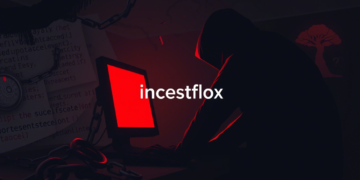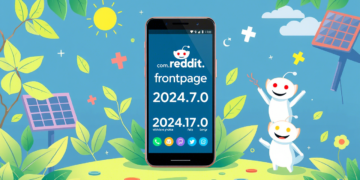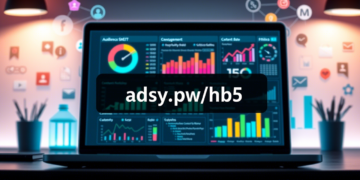Have you ever stumbled across a term online that makes you pause, squint at your screen, and wonder what kind of rabbit hole you’ve just fallen into? If incestflox has crossed your radar, you’re not alone. This shadowy keyword buzzes with intrigue, controversy, and a hefty dose of unease. But what exactly is it? Why does it stir up so much heat? And should you even be googling it? Buckle up because we’re about to peel back the layers of this digital enigma with a mix of curiosity, caution, and a sprinkle of fun—yes, even the dark stuff can be explored with a bit of wit!
Let’s start with the basics. Incestflox isn’t just some quirky internet slang or a typo you can laugh off. It’s a term tied to something far murkier: online content that depicts incestuous pornography. Before you cringe or click away, hang with me—this isn’t about glorifying anything. It’s about understanding what’s out there, why it’s a problem, and how it affects our world, both online and off. Ready to dig in? Let’s go!
What Does Incestflox Mean?
Picture this: you’re scrolling through the Wild West of the internet, and somewhere between memes and cat videos, you hit a wall of content that feels like it belongs in a locked vault. That’s where incestflox lives. It refers to pornographic material that showcases incest—sexual relationships between close relatives. Think siblings, parents, kids, or cousins who’ve crossed a line society drew in bold red ink long ago. This isn’t a niche fantasy for late-night giggles; it’s a category that’s illegal in most places and carries a stench of exploitation that’s hard to shake off.
Why the weird name? No one’s entirely sure where incestflox popped up—some say it’s a mashup of “incest” and a random suffix to dodge search filters; others think it’s a code word from shady corners of the web. Whatever the origin, it’s a flag-marking territory you don’t want to wander unprepared.
Is Incestflox Legal? Spoiler: Nope
Let’s cut to the chase—incestflox isn’t just frowned upon; it’s flat-out illegal in most countries. Laws worldwide slam the door shut on producing, sharing, or possessing this content. Why? Because it’s often linked to child sexual abuse and exploitation. Governments don’t mess around here—penalties range from hefty fines to years behind bars. In the U.S., for example, federal laws treat this stuff like dynamite, and places like the UK and Australia aren’t far behind with their ironclad rules.
But here’s the kicker: legality doesn’t stop it from existing. The internet’s a sprawling beast, and incestflox slinks through its cracks like a digital phantom. Hidden on sketchy sites or buried in encrypted chats, it thrives where law enforcement struggles to keep up. Curious about the consequences? One wrong click could land you in a legal nightmare—or worse, expose you to the harm that sticks with you.

Why Is Incestflox So Harmful?
Okay, let’s get real—why should you care about incestflox beyond the “eww” factor? It’s not just about breaking rules; it’s about hurting people. This content doesn’t pop out of thin air. Behind every video or image, there’s a victim—often a child—trapped in a cycle of abuse. Psychologists say the damage runs deep, leaving scars like trauma, shame, and shattered trust that can last a lifetime.
And it’s not just the victims who suffer. When people watch incestflox, it messes with their heads, too. Studies show that soaking in this material can twist how you see relationships, making creepy stuff feel normal. It’s like planting a seed that grows into something toxic—normalizing abuse one view at a time. Ever wonder why society sets such rigid boundaries? This is why: to keep the dominoes of harm from toppling further.
The Ethical Mess of Incestflox
Now, let’s flip the coin—why would anyone defend incestflox? Some argue it’s about free speech or personal freedom, claiming adults should explore whatever they want privately. Sounds edgy, right? But here’s where that argument trips over itself: consent. In most cases tied to incestflox, someone’s getting exploited—coerced, tricked, or too young to say no. That’s not freedom; it’s a power grab dressed up as liberty.
Ethically, this stuff sits in a swamp of quicksand. Even if it’s “just fantasy” or staged, it still fuels a market that thrives on real suffering. Ask yourself: does your right to watch something outweigh someone else’s right not to be hurt? Most folks would say no, and that’s where incestflox crashes into a moral wall.
What Happens When You Search for Incestflox?
Are you tempted to type incestflox into your browser? Hold up—let’s talk risks. First off, you’re wading into a cesspool of illegality. One click could flag your IP address for authorities or link you to content you can’t unsee. Second, the sites hosting this junk are often booby-trapped with malware—think viruses that steal your data or lock your device until you pay ransom. It’s like walking into a haunted house where the ghosts hack your bank account.
And then there’s the psychological hit. Stumble into incestflox, and you might leave with a knot in your stomach—or a warped sense of what’s okay. The internet’s a treasure trove, but this corner’s more like a trapdoor. Stick to cat videos; they’re safer and way cuter.
Can Incestflox Ever Be Stopped?
Here’s the million-dollar question: can we scrub incestflox from the web? Tech companies try—they’ve got algorithms, moderators, and hotlines to report the bad stuff. Groups like the Internet Watch Foundation work overtime to shut down sites peddling this filth. But the web’s a hydra—cut off one head, and two more pop up. Peer-to-peer networks and dark web hideouts keep incestflox alive, dodging the spotlight like a crafty villain.
What about prevention? Education’s a start—teaching kids and adults about online safety cuts the demand. Stronger laws and global teamwork could choke the supply. But as long as curiosity and creeps exist, incestflox won’t vanish overnight. It’s a game of whack-a-mole with stakes higher than your average arcade prize.
How Does Incestflox Affect Society?
Zoom out for a sec—incestflox isn’t just a personal problem; it’s a societal one. When this spreads, it chips away at the taboos holding families together. Trust erodes, boundaries blur, and suddenly, the lines we’ve drawn for safety start to fade. Researchers warn that normalizing this content could spark real-world harm, from grooming to abuse that spills offline.
On the flip side, some say it’s a symptom, not the disease—people drawn to incestflox might already have issues bubbling under the surface. Either way, it’s a mirror reflecting the internet’s wild side, where freedom and filth dance a tricky tango. What do you think—does it shape us, or do we shape it?
Incestflox Biography Table
Here’s a quick rundown of everything we know about incestflox, laid out like a cheat sheet:
| Aspect | Details |
|---|---|
| Definition | Pornographic content depicting incestuous relationships. |
| Legality | Illegal in most countries; tied to child abuse and exploitation laws. |
| Origin | Unclear—possibly a coded term to evade filters; surfaced in online shadows. |
| Risks | Legal trouble, malware exposure, psychological harm. |
| Impact | Harms victims, normalizes abuse, challenges societal norms. |
| Distribution | Found on shady websites, dark web, encrypted networks. |
| Ethical Issues | Exploitation, lack of consent, perpetuation of harm. |
| Prevention Efforts | Tech moderation, laws, education—ongoing but imperfect. |

So, Should You Care About Incestflox?
Short answer: yes. Incestflox isn’t just a weird word—it’s a window into the internet’s underbelly, where curiosity can cost you more than you’d bargain for. It’s a reminder that not every corner of the web is worth exploring, and some doors are better left shut. Whether dodging legal traps, protecting your mental space, or keeping your device virus-free, steering clear of incestflox is a no-brainer.
But it’s more than that—it’s a call to think about the world we’re building online. Every click feeds something, good or bad. So, next time you’re tempted by the unknown, maybe opt for a mystery that doesn’t bite back. What’s your take? Have you ever bumped into something online that made you rethink your digital diet?































Comments 2